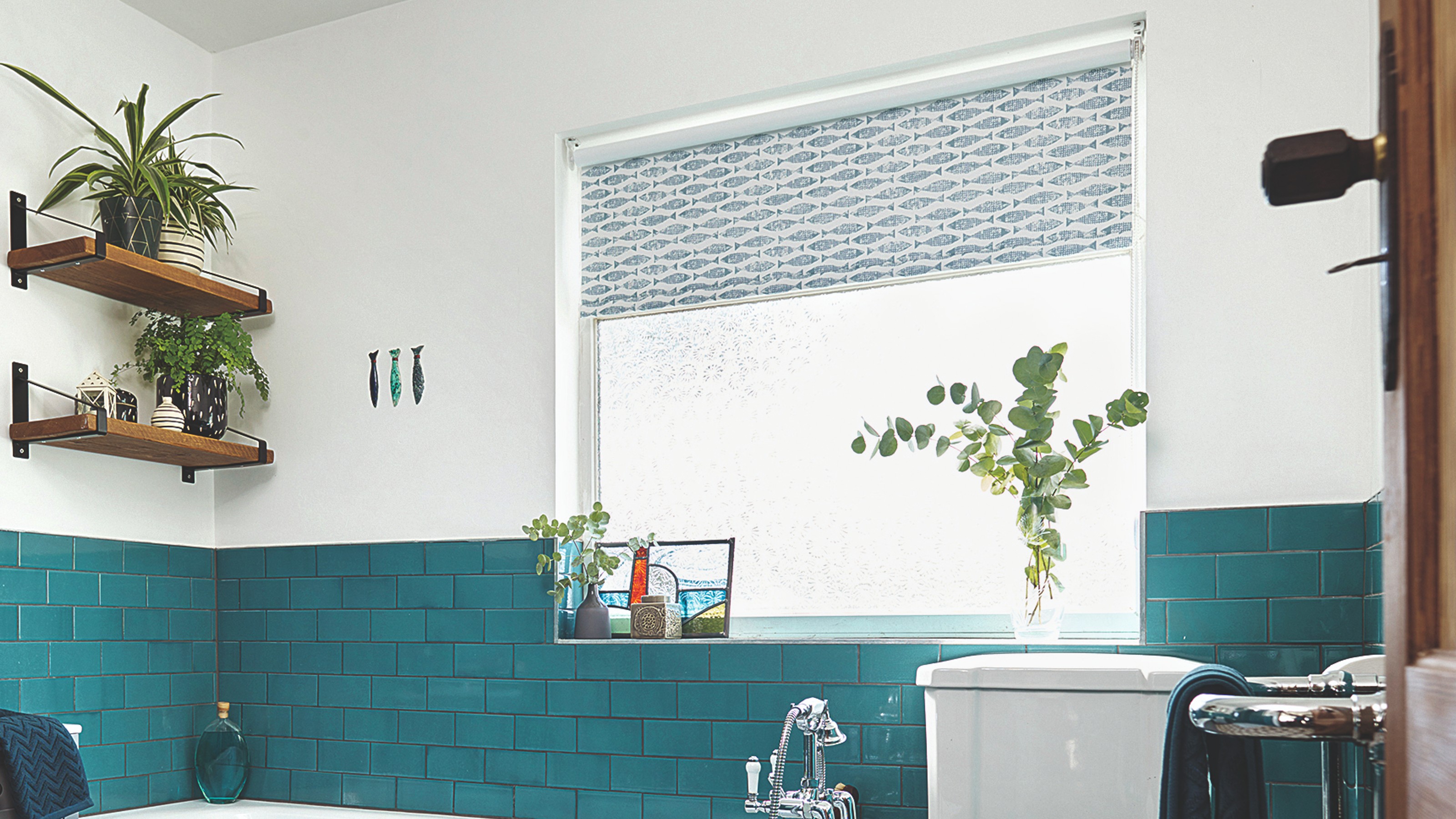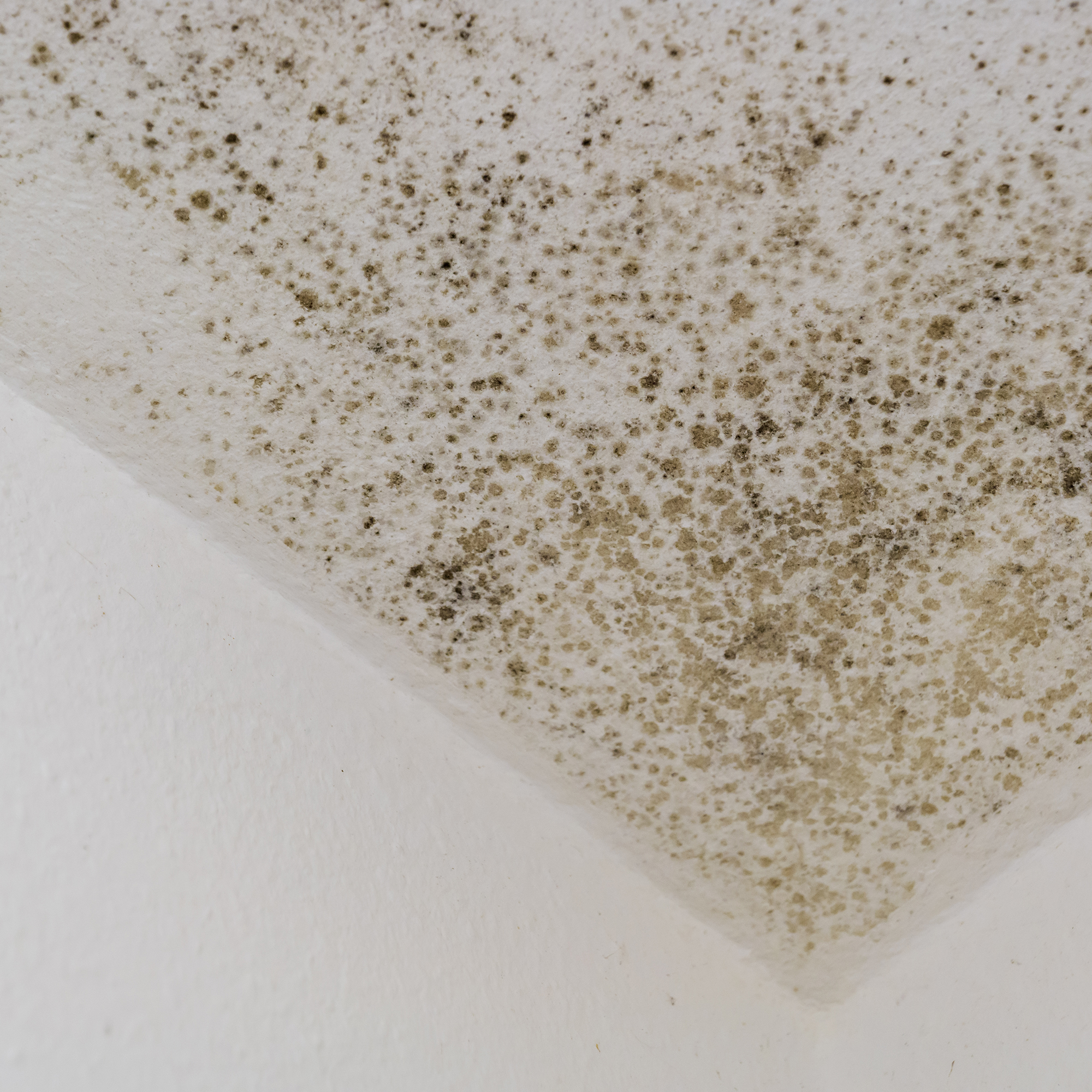Unusual marks on your walls? Experts explain how to tell the difference between mould and condensation
Knowing the difference can save you thousands


If you’re wondering how you can tell the difference between mould and condensation, you’re asking yourselves all of the right questions.
After all, spotting damp patches and unusual marks on your walls is a sure sign that something isn’t quite right in your home. However, there’s a big difference between condensation and mould. Getting rid of and preventing condensation is far easier than tackling a mould problem that is much more serious and can ultimately affect your home and your health.
That’s why we’ve consulted with experts in the industry to help you tell the difference between mould and condensation and the signs you need to look out for.
The difference between mould and condensation

Mould on ceiling
‘Mould and condensation are both moisture-related problems that occur in homes and buildings. However, they're completely different in what they are,’ explains Nicholas Auckland, heating expert at Trade Radiators. They also look very different, and we’ve explained how to distinguish the two below.

Nicholas Auckland is a heating and energy expert with over 10 years of experience in the industry, as well as the Managing Director of Trade Radiators. Nicholas is dedicated to finding the best heating solutions for every need, as well as optimising energy usage, reducing costs and helping others live with lower costing energy bills. Nicholas has become a trusted leader in the industry, frequently collaborating with the media and other partners to assist with cost of living issues and other home-related problems.
What is condensation?
Ultimately, condensation is a form of damp that’s caused by excess moisture in your home, and it’s extremely common.
Jack Garratt, Managing Director at Garratt’s Damp & Timber Ltd, says, ‘This water vapour comes about through everyday activities such as cooking, showering, drying clothes and so on. If that vapour has nowhere to escape, the air in your home becomes saturated and turns into condensation that sits on walls, windows and other surfaces.’
If you have poor ventilation (for example, you don’t open your windows, you don’t use extractor fans, or you don’t have one of the best dehumidifiers), this condensation has nowhere to go. As a result, it’ll cling to your walls and get worse the longer it's left untreated.
In fact, too much condensation in your home can ultimately lead to mould.

What does condensation look like?
As condensation is made up of water droplets, it essentially looks just like water. You’ll normally spot these droplets at the bottom of your windows, on the mirrors in your bathroom, on the tiles in your kitchen, and even on your painted walls.
If there is condensation on your painted walls, you’ll see that the paint is noticeably darker, and you might be able to see drip marks as gravity takes hold of the water droplets. In extreme cases, you may even spot peeling paint on your walls.
Thankfully, condensation isn’t too serious - as long as you don’t let it turn into mould. To get rid of condensation, you’ll need to improve your ventilation when drying your washing inside, cooking, and showering.

The best dehumidifiers under £100 can also be a godsend when you want to remove excess moisture from your home, and there are even many plants that can reduce condensation.
Jack adds, ‘Implementing condensation prevention strategies will keep condensation at a minimum. If it does occur, take a dry cloth and wipe it down. If left unaddressed, it will seep into your walls and ceilings and turn into mould. This is then a much bigger and more expensive problem to rectify.’
What is mould?
Unfortunately, mould is a by-product of prolonged condensation and damp issues in a home. This fungus thrives in moist and wet conditions and can be extremely harmful to your house and your home.
Nicholas says, ‘Mould grows well in high humidity locations that have poor ventilation, and the most important difference is that mould can be lethal. When its spores are breathed in, it can have a negative impact on our respiratory system, which has side effects such as lethargy and continual flu-like symptoms.’

‘Many people with major mould problems suffer with these symptoms continually, although those with weakened immune systems are more likely to fall majorly ill.’
It also spreads through mould spores, which attach themselves to these moist walls and surfaces and reproduce to create even larger mould patches.
The best air purifiers can help to stop mould from coming back, but ultimately, you want to avoid this mould from developing in the first place - especially if you have asthma or other breathing difficulties.
What does mould look like?
Nobody wants mould in their home, but the good thing about mould is that it’s extremely easy to spot. It can come in a variety of colours, and this mould is typically the result of excess damp and condensation.
‘It shows up as either green, black or white patches, and can be furry like the mould you see on food items,’ explains Nicholas.
In most cases, this mould will form in smaller spots that band together to make larger areas of mould. These will usually be found on walls and ceilings and in rooms with high moisture levels, such as the kitchen and the bathroom.
While these visible signs of mould are easy to see by eye, it’s also important to take note of the invisible signs of mould. These include sneezing, a runny nose, skin inflammation, itchy eyes, and increased asthma attacks in those who suffer from breathing difficulties.
How to really tell the difference
Now you know what both condensation and mould look like, it’s important to consider what they look like when they’re pipped against each other. Thankfully, there’s an easy way to do this:
Check its appearance: James Higgins, eCommerce Manager at Online Carpets explains, ‘Be sure to inspect the appearance of the area - condensation will typically show as water droplets, whereas mould can look like discoloured patches, and look black, brown, grey, and green.’
Check its location: Where you find these unusual marks on your wall will also help you tell the difference between mould and condensation. ‘Take note of the location - condensation will normally be found on windows, walls, and ceilings, especially if you have poor ventilation. Meanwhile, mould thrives in dark, damp environments, especially where a leak or a flood has come into play, explains James.
Check its persistence: If you’re not sure whether you have condensation or mould, consider how long the marks have been there. Nicholas notes, ‘Mould sadly won't just disappear on its own, and will continue to grow if it's not properly treated. Condensation will usually clear up once the area is adequately ventilated or heated.’
FAQs
How do you test for damp or condensation?
One of the best ways to tell the difference between mould and condensation is to look at the area of damp. If the wall is wet and the windows near the wall are covered in water droplets, it’s highly likely that you just have condensation. This is easily treated by increasing your ventilation and drying out your home by using a dehumidifier.
Paul Hambidge at Factory Direct Flooring explains, ‘Condensation is different from mould, but it's important to note that condensation can cause mould. To begin with, condensation usually looks like water droplets, or a 'film' of moisture and appears on surfaces like windows, cold walls, or even mirrors.’
‘Mould can grow anywhere where humidity levels are especially high, or near water leaks, and can look like little spots (usually black, grey, brown or green) or even appear 'fuzzy'.
If you’re unsure of whether you have damp or condensation, it’s always a good idea to seek the advice of professionals.
Is black mould always condensation?
Black mould is often caused by condensation, as mould is the result of extreme damp problems in your home. However, it’s important to note that condensation is fairly normal - especially during the winter months. It’s also easily treatable if you improve your ventilation and have the right tools at your disposal.
Black mould isn’t always caused by condensation, though. It could also be caused by other forms of damp, such as rising damp and penetrating damp. These are much more serious and require the help of experienced professionals.
Now you know how to tell the difference between mould and condensation, you can keep a closer eye on your walls.
Get the Ideal Home Newsletter
Sign up to our newsletter for style and decor inspiration, house makeovers, project advice and more.

Lauren Bradbury has been the Content Editor for the House Manual section since January 2025 but worked with the team as a freelancer for a year and a half before that. She graduated with a Bachelor’s degree in English and Creative Writing from the University of Chichester in 2016. Then, she dipped her toe into the world of content writing, primarily focusing on home content. After years of agency work, she decided to take the plunge and become a full-time freelancer for online publications, including Real Homes and Ideal Home, before taking on this permanent role. Now, she spends her days searching for the best decluttering and cleaning hacks and creating handy how-to guides for homeowners and renters alike, as well as testing vacuums as part of her role as the Ideal Home Certified Expert in Training on Vacuums, having spent over 110 hours testing different vacuum models to date!
-
 Will a conservatory add value to your home and how can you maximise it?
Will a conservatory add value to your home and how can you maximise it?This is what the pros say
By Amy Reeves
-
 I’ve been looking for a new signature scent for my home and The White Company's new fragrance is the exact summer holiday smell I needed
I’ve been looking for a new signature scent for my home and The White Company's new fragrance is the exact summer holiday smell I neededSantorini smells fresh, summery and sophisticated
By Kezia Reynolds
-
 How to remove algae from garden walls in five steps – and the cleaning product experts rave about for tackling it fast
How to remove algae from garden walls in five steps – and the cleaning product experts rave about for tackling it fastExperts share their top tips for getting garden walls algae-free
By Katie Sims